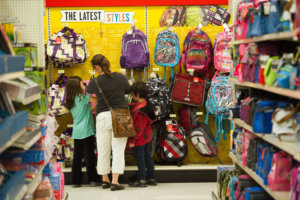Check To See What You Already Have
For many students, some of the items on their school supply list were on their list the year before. Items like rulers, scissors, calculators, and binders are not consumed during the school year, so if they are in good condition, there is no reason they cannot be used for another year. You may also find barely used notebooks, pencils, pencil cases, art supplies, folders, and other supplies around your house. The more stuff you find, the less you will have to buy.
Shop During Tax-Free Weekends
About 17 states are offering tax-free weekends this year to help parents get more for their back to school shopping budget. During these days, shoppers will not have to pay sales tax on purchases that fall into particular categories, like clothing and school supplies. With many states and cities charging sales tax of more than 7 percent, shoppers can save a considerable amount of money shopping sales during these tax-free weekends.
Visit Discount Stores
While you may question the quality of the clothing purchased at discount stores like Family Dollar and Dollar General, their packaged items come from the same manufacturers that supply items to grocery stores and mass merchandisers. This means that the school supplies purchased in these stores are of the same quality that you would find anywhere else. Stop at these stores first to find as many school supplies as you can at the lower cost, then you can shop other stores for the items that you couldn’t find.
Use A List And A Budget
Before heading out to the store, you should have a list of the items you need to buy and a maximum amount that you plan to spend purchasing the items. Taking these steps before leaving your home allows you to focus on finding the items you truly need, prevent you from spending more than you can afford, and help you get done with your shopping and out of the store quickly. Stick to the list and ignore all of the bright signs and advertised deals for things that you didn’t intend to buy.

